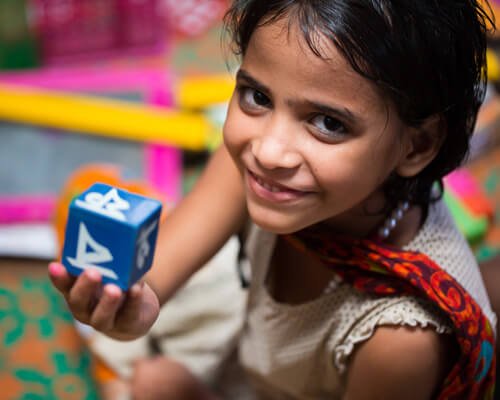A new UNESCO report provides insight into how countries are accelerating progress towards the global Sustainable Development Goal on education (SDG 4). It highlights examples of countries’ actions to transform their education systems.

The survey report underscores the necessity of a multifaceted, context-specific approach to transforming education. It is essential to recognize that countries are in different places in their education transformation journeys and are taking various approaches to support what is needed most in their unique contexts.
Transformative action encompasses gradual or small-scale improvements and larger systemic changes that better align with the evolving learning needs within a new social contract. Transforming education needs to be contextualized within each country’s unique realities. Not only do countries have different priority areas but they also have different economic and socio-cultural conditions that factor into decision making.
Three examples of how countries have contextualized their approaches to transform education within their political, economic and socio-cultural environments:
Lebanon’s 2025 education strategy aims to provide equal opportunities for vulnerable children – both Lebanese and refugees – through government-funded tuition for grades K to 9 and a ‘Cash for Education’ programme that assists with non-tuition expenses, benefiting about 90,000 students from the most vulnerable groups in public schools. This financial support of 15 to 20 USD per child per month over two consecutive years will help mitigate the economic pressures that often drive families towards short-term solutions like child labour or early marriage for girls. Thus, this initiative also aims to contribute to a reduction in child labour
Lebanon’s 2025 education strategy aims to provide equal opportunities for vulnerable children – both Lebanese and refugees – through government-funded tuition for grades K to 9 and a ‘Cash for Education’ programme that assists with non-tuition expenses, benefiting about 90,000 students from the most vulnerable groups in public schools. This financial support of 15 to 20 USD per child per month over two consecutive years will help mitigate the economic pressures that often drive families towards short-term solutions like child labour or early marriage for girls. Thus, this initiative also aims to contribute to a reduction in child labour
Lebanon’s 2025 education strategy aims to provide equal opportunities for vulnerable children – both Lebanese and refugees – through government-funded tuition for grades K to 9 and a ‘Cash for Education’ programme that assists with non-tuition expenses, benefiting about 90,000 students from the most vulnerable groups in public schools. This financial support of 15 to 20 USD per child per month over two consecutive years will help mitigate the economic pressures that often drive families towards short-term solutions like child labour or early marriage for girls. Thus, this initiative also aims to contribute to a reduction in child labour
Countries must increase investments in education from all sources, including international aid and innovative financing, to meet their SDG 4 targets while ensuring efficient and effective use of resources. Achieving effective education financing requires cutting inefficiencies, enhancing governance, and linking investments to education outcomes, focusing on maximizing impact and accountability.
Three examples of education financing to ensure equitable resource distribution, transparency, and sustainability:
Countries must increase investments in education from all sources, including international aid and innovative financing, to meet their SDG 4 targets while ensuring efficient and effective use of resources. Achieving effective education financing requires cutting inefficiencies, enhancing governance, and linking investments to education outcomes, focusing on maximizing impact and accountability.
Three examples of education financing to ensure equitable resource distribution, transparency, and sustainability:
Countries must increase investments in education from all sources, including international aid and innovative financing, to meet their SDG 4 targets while ensuring efficient and effective use of resources. Achieving effective education financing requires cutting inefficiencies, enhancing governance, and linking investments to education outcomes, focusing on maximizing impact and accountability.
Three examples of education financing to ensure equitable resource distribution, transparency, and sustainability:
Countries must increase investments in education from all sources, including international aid and innovative financing, to meet their SDG 4 targets while ensuring efficient and effective use of resources. Achieving effective education financing requires cutting inefficiencies, enhancing governance, and linking investments to education outcomes, focusing on maximizing impact and accountability.
Three examples of education financing to ensure equitable resource distribution, transparency, and sustainability:
Countries must increase investments in education from all sources, including international aid and innovative financing, to meet their SDG 4 targets while ensuring efficient and effective use of resources. Achieving effective education financing requires cutting inefficiencies, enhancing governance, and linking investments to education outcomes, focusing on maximizing impact and accountability.
Three examples of education financing to ensure equitable resource distribution, transparency, and sustainability:
Countries must increase investments in education from all sources, including international aid and innovative financing, to meet their SDG 4 targets while ensuring efficient and effective use of resources. Achieving effective education financing requires cutting inefficiencies, enhancing governance, and linking investments to education outcomes, focusing on maximizing impact and accountability.
Three examples of education financing to ensure equitable resource distribution, transparency, and sustainability:
